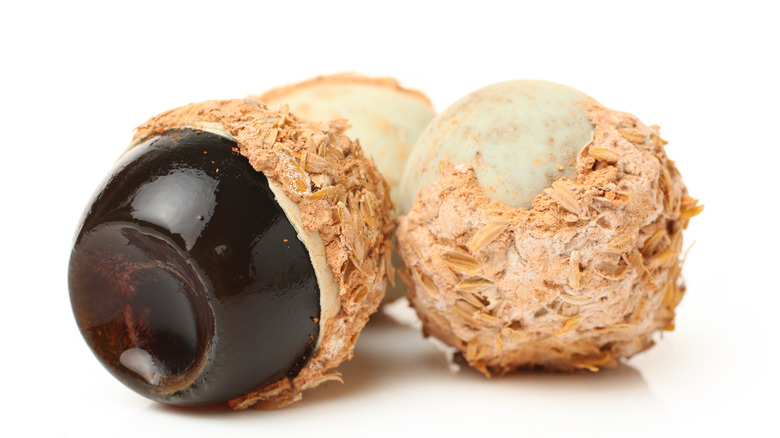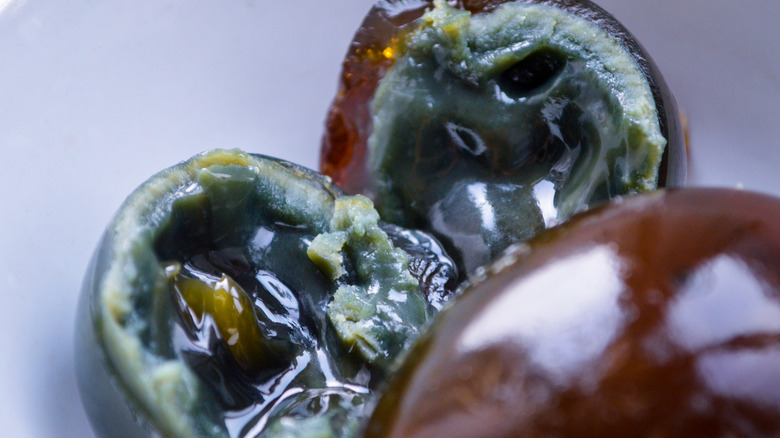Watching How Century Eggs Are Mass-Produced Is Mesmerizing
Pidan eggs go by many names, but they are most commonly called century eggs or 100-year-old eggs in English. And while they certainly look aged, they are nowhere near a hundred years old. They are often spotted in restaurants and at Chinese festivals, celebrated for their unique taste and thought of as a delicacy. As popular as they are, these eggs aren't coming from small home kitchens across China, but rather from mass-producing factories. And the process is incredible, to say the least.
First, all of the cleaned eggs are checked with a light to ensure no developed or fertilized eggs are used in the process. For century eggs, either duck, quail, or, chicken eggs can be used. They are then preserved in an alkaline marinade and sealed completely, then left to age for a few months. They are preserved in a marinade made up of salt, quicklime, ash, and clay, similar to lye-soaked preservation methods seen across many cultures and cuisines. In a video of a century egg factory, the eggs seemed to be put in several industrial-sized vats of various clay colors, presumably all containing the quicklime and ash components to ensure even coating and to prevent oxygen and other contaminants from getting inside while the chemical reaction takes place.
The clay is just the beginning
When the eggs have completed their clay treatment, they are gently ushered down a rice hull-encrusted slide by factory workers wielding wire egg spoons. This gives the eggs a distinctive final layer and ensures that the still-wet clay won't clump the eggs together, making separation impossible. The eggs are then taken to an enormous drying room where they are left to age for months on end. During that time, the clay coating reacts with the proteins and fats of the egg. Unlike a typical acidic pickling solution, the clay marinade is alkaline, which will make the egg alkaline in turn.
@thefoodrangerofficial This is how century eggs are made, I can't stop watching #fyp #fypspotted #viral #food #trend #thefoodranger #foodranger #fypシ
After a century eggs have fully cured in the drying room, they can be peeled back to reveal a gelatinous, gooey egg. The coloring can vary between century egg factories, ranging from pastel yellow whites and golden yolks to deep amber whites with green-black yolks — the color difference isn't accounted for in the video, but according to Yum of China, it's due to whether the eggs were vacuum sealed during the curing process or not.
The taste seems to stay consistent regardless of color. After this months-long process of clay dipping and fermenting, the century eggs are then shipped and sold still in their rice hull husks. To eat, you simply crack the husk open and gently peel back the layers to reveal the cured, jelly-like egg — no additional cooking required. They are usually served with rice, soft tofu, or enjoyed on their own.

